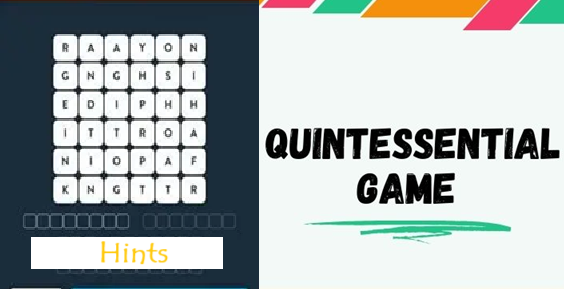
The Connections game, a viral word-association puzzle released by The New York Times, has captivated thousands of players worldwide. With its blend of vocabulary skills, abstract thinking, and lateral logic, it presents a delightful challenge that often leaves even the most seasoned wordsmiths scratching their heads. In this ultimate guide, we explore winning strategies, deep game mechanics, and advanced techniques to help you master the game and elevate your cognitive edge.
What is the Connections Game?
Connections is a daily online word game where players group 16 seemingly unrelated words into four distinct categories. Each group contains four words that share a hidden connection — this could be anything from synonyms, categories, themes, cultural references, to homophones or idioms. The goal is to correctly identify all four groups without exceeding four mistakes.
The categories are color-coded based on difficulty:
- Yellow (easiest)
- Green
- Blue
- Purple (hardest)
How to Approach the Connections Game Strategically
1. Begin with Obvious Groupings
Start by scanning the board for obvious connections. These are usually the yellow or green categories, such as:
- Days of the week
- Common colors
- Types of fruit
- Synonyms for basic emotions
These easier categories often help reduce visual clutter and can trigger insights into trickier groupings.
2. Use the Process of Elimination
Once you successfully isolate one group, remove those words mentally or physically if you’re playing with pen and paper. Reducing the list allows your brain to spot hidden patterns among the remaining words.
3. Recognize Trick Words and Red Herrings
Many words are purposefully placed to mislead or confuse — these are known as decoys or red herrings. For example:
- The word “bass” could refer to a musical instrument or a fish
- “Apple” could belong in a group of tech companies or fruits
Understanding polysemy (words with multiple meanings) is essential.
Deep Dive into Category Types
Synonyms and Antonyms
Look for words that have similar meanings or are opposites:
- Example: happy, joyful, elated, cheerful (synonyms for happiness)
Pop Culture and Media References
Modern Connections puzzles often include:
- TV Shows: Friends, The Office, Seinfeld, Cheers
- Movies: Titanic, Avatar, Inception, Gladiator
- Music Genres or Bands
Staying current with pop culture enhances success in these categories.
Puns and Wordplay
Some categories are based on phonetic similarities or puns:
- Knight, write, rite, right (homophones)
- On the rocks, last call, double, neat (cocktail-related terms)
Be alert for words with multiple spellings, meanings, or idioms.
Thematic or Conceptual Links
Think about overarching themes:
- Red, blue, green, yellow (primary colors)
- Earth, Mars, Venus, Saturn (planets)
- Spring, summer, fall, winter (seasons)
Sometimes the connection is abstract rather than literal.
Winning Patterns of Thought
Pattern Recognition
Train your brain to spot groupings faster by practicing similar logic puzzles like:
- Crossword puzzles
- Word ladders
- Category-based trivia
The more you practice, the more intuitive pattern recognition becomes.
Lateral Thinking
Sometimes connections aren’t straight lines. Lateral thinking — solving problems through an indirect and creative approach — is crucial. Ask:
- What’s another context for this word?
- Could this relate to slang, idioms, or a saying?
Memory Association
The game favors players with diverse knowledge bases. The more you’re exposed to literature, pop culture, science, sports, and language, the more you’re able to draw on that knowledge to form groupings quickly.
Common Pitfalls and How to Avoid Them
Rushing the First Guess
A common mistake is to rush through the first four-word guess. Incorrect guesses not only use up one of your four chances, they don’t provide clues as in some other games. Take your time to be sure.
Overthinking Obvious Links
Sometimes a group seems too easy — but that doesn’t mean it’s wrong. Trust your instinct when several words clearly connect. Occam’s Razor applies: the simplest explanation is often the right one.
Forgetting Word Nuances
Words might look similar but mean different things in various contexts. Always check contextual use:
- Is the word being used in a technical, slang, or formal setting?
Pro Tips from Expert Players
- Screenshot puzzles to study them later and understand trick groupings.
- Discuss with friends: collaborative play often uncovers associations one might miss solo.
- Replay archived puzzles to improve speed and accuracy.
- Use spaced repetition apps to build vocabulary and category memory.
- Keep a personal category logbook — when you spot a new type of grouping, write it down.
The Benefits of Playing Connections
Beyond being a fun challenge, playing Connections regularly can:
- Enhance cognitive flexibility
- Expand vocabulary and general knowledge
- Improve categorical memory and pattern detection
- Encourage collaborative and competitive thinking
The brain, like a muscle, thrives on new challenges. The Connections game exercises multiple brain functions simultaneously, keeping you sharp and mentally agile.
Conclusion: Practice, Patience, Precision
To excel at the Connections game, players must embrace a mix of logical precision, creative thinking, and cultural awareness. Whether you’re a first-time player or an experienced puzzler, the strategies outlined above will sharpen your skills and elevate your gameplay. Consistency is key — as you build mental libraries of themes and connections, you’ll begin to anticipate groupings before even reading the whole list.
Also Read: The Arcane Manual to Output Arcade Torrenting on Windows



